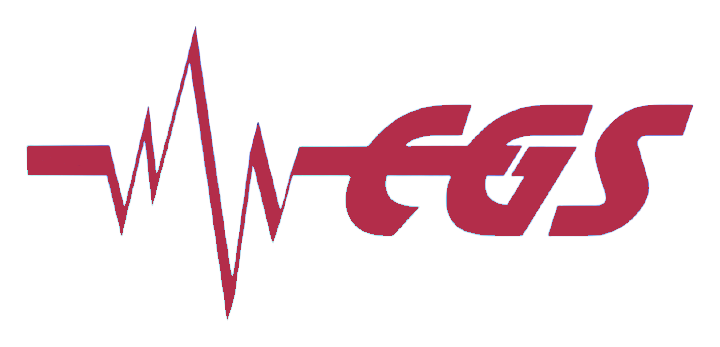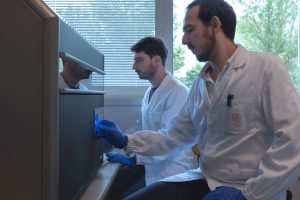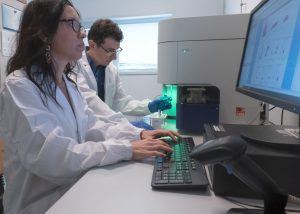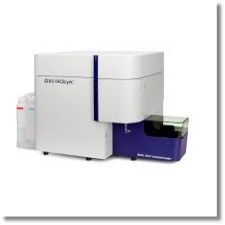Description
The Flow Cytometry Laboratory offers support and assistance to both internal and external users at different levels.
LEVEL 1 – Training and Education
Technical and Analytical Skills
- Hands-on training on instruments: flow cytometer (BD), imaging cytometer (Amnis), cell sorter (BD)
- Training on different available software for data analysis: FACSDiva, FacsSuite, IDEAS (Amnis), FlowJo
- Basic and advanced theoretical courses
LEVEL 2 – Scientific Assistance
Expert support for complex experiments
- Assistance with multiparametric panels (phenotyping)
- Assistance with multiparametric sorting panels (sorting with different masks: purity, yield, single cell)
LEVEL 3 – Accessibility and Collaboration
Open to internal and external users
- Personalized technical and scientific support
- Collaboration on complex projects
The lab is equipped with three flow cytometry instruments, a BSL-2 sample preparation room, and a dedicated flow cytometry analysis workstation.
Equipment
Software
| Nome | Descrizione | |
|---|---|---|
| FACSSuite | The software that controls the BD FACSLyric™ flow cytometer consists of two applications: BD FACSuite™ Clinical Application and BD FACSuite™ Application. Both provide a user-friendly interface for data acquisition and analysis with the BD FACSLyric™ system. The BD FACSuite™ Clinical Application supports IVD diagnostic testing, while the BD FACSuite™ Application is designed for custom, user-defined tests, offering a simple, reproducible, and transferable configuration that facilitates standardization. | link |
| FACSDiva | It is a comprehensive system that provides tools for cytometer setup, application configuration, data acquisition, and result analysis. It is designed to streamline flow cytometry workflows in modern, high-throughput laboratories. BD FACSDiva™ offers features that help users integrate flow cytometry systems across various applications, including index sorting and single-cell applications. It provides practical and intuitive tools for building experimental layouts, simplifying experiment setup. Users can visually navigate the entire experiment and quickly add labels, keywords, and acquisition attributes to a single tube, multiple tubes, specific samples, or the entire experiment. The software allows users to save templates of experiments, analyses, and panels for future use—without compromising data integrity. It also enables saving application-specific settings to correctly identify cell populations of interest. Once a daily performance check is completed to update these settings, they can be applied to ensure consistent execution of applications day after day. | link |
| FlowJo | The most widely used software for flow cytometry data analysis is available in the facility on a dedicated workstation with a portal licence. Key features: Advanced data analysis: enables the analysis of large data sets, including dozens of parameters per cell. Dynamic gating: allows users to define and refine cell populations in a visual, interactive, and precise manner. Statistics and plots: calculates statistics for each population (mean, standard deviation, percentages, etc.) and generates various plots such as histograms, dot plots, and density plots. Plugins: includes modules for advanced analyses such as kinetics, cell cycle, apoptosis, automated clustering, t-SNE, UMAP, SPADE, and index sorting. Compatibility: supports .fcs files, the standard format for flow cytometry data, and is compatible with data from various instrument manufacturers (BD, Beckman Coulter, Sony, Cytek, etc.). Batch analysis: allows automated analysis of dozens or hundreds of samples using the same gating strategy. | link |
| Inspire | It is a data acquisition software developed by Amnis for use with the ImageStreamX Mark II flow cytometer. This instrument combines the capabilities of traditional flow cytometry with high-resolution imaging, enabling simultaneous acquisition of brightfield and fluorescence images of cells in flow. It supports high-speed acquisition, capturing both brightfield and darkfield images, and manages image capture via a TDI CCD camera, ensuring high spatial resolution (up to 0.3 × 0.3 µm per pixel with a 60× objective). Acquired data can be analysed using IDEAS software, which provides quantitative tools for cell image analysis and population-level statistics. This system is used to study various cellular processes such as: translocation, co-localization, cell cycle, apoptosis, autophagy, vesicle internalization. | |
| IDEAS | It is the data analysis software developed by Amnis, specifically designed for processing data generated by ImageStream imaging flow cytometers. It enables the analysis of images acquired through imaging flow cytometry by integrating fluorescence intensity with morphological information, allowing for the quantification of complex cellular events such as: co-localization, nuclear translocation, nuclear morphology, apoptosis, phagocytosis, internalization. The software also allows users to create custom masks to identify subcellular regions (e.g. nucleus, cytoplasm, membrane) for the calculation of statistical measurements on those specific areas. |
Rates
The Centre’s regulations provide for the application of a fee for the use of the equipment:
INTERNAL USERS
Consultation is reserved for University staff: link
EXTERNAL USERS
| Equipment/Service | Autonomous use* (hourly rate) | With technical support (hourly rate) |
|---|---|---|
| BD FACSLyric Flow Cytometer | € 30,00 | € 60,00 |
| AMNIS IMAGE STREAM MARK II Flow Cytometer | € 45,00 | € 90,00 |
| BD FACSAria III Cell Sorter | € 40,00 | € 80,00 |
| Special treatments of the sample, organization and treatment of data, drafting of reports | not available | € 100,00 |
* autonomous use permitted upon proven competence in using the equipment
EXTERNAL USERS WITH AGREEMENTS
| Equipment/Service | Autonomous use* (hourly rate) | With technical support (hourly rate) |
|---|---|---|
| BD FACSLyric Flow Cytometer | € 13,20 | € 40,70 |
| AMNIS IMAGE STREAM MARK II Flow Cytometer | € 13,20 | € 40,70 |
| BD FACSAria III Cell Sorter | € 39,60 | € 67,10 |
| Special treatments of the sample, organization and treatment of data, drafting of reports | not available | € 30,00 |
* autonomous use permitted upon proven competence in using the equipment
Publications
FAQ and Protocols
FAQ
| # | Question | Answer |
|---|---|---|
| 1 | When should I use FACS (Fluorescence-Activated Cell Sorting) instead of other separation methods, such as density gradient centrifugation or immunomagnetic separation? | When high purity (greater than 95%) of the… (see more) |
| 2 | How large can the cells be? | The BD FACSAria III is a cell sorter equipped with 70, 85, 100, and 130 μm nozzles. In general… (see more) |
| 3 | How many cells do I need for the sorting? | To answer this question, the following information is required… (see more) |
| 4 | What does the yield of a sorting depend on? | The actual recovery percentages depend on several factors… (see more) |
| 5 | What percentage of the theoretical number of cells can realistically be recovered? What does it depend on? | In general, a recovery of at least 50% of the theoretical…(see more) |
| 6 | Are there ways to improve sorting? | Use polypropylene tubes for cell preparation and sorting… (see more) |
| 7 | How many cells per second can be sorted with a BD FACSAria III sorter? | The instrument’s maximum acquisition speed is about 25,000 events per second… (see more) |
| 8 | How long does the sorting procedure take? | Approximately 1 hour is required for each working day for the operator to prepare the instrument, stabilize the fluidics… (see more) |
| 9 | Will my cells be damaged during the sorting? | It’s important to note that the toxicity of pre-sort staining can affect cell viability … (see more) |
| 10 | How can I preserve cell viability during sorting, and are there ways to improve it? | Samples should be kept in a nutrient-rich medium for the specific cell type… (see more) |
| 11 | What is the maximum purity that can be achieved for a sorted population, and what does it depend on? | The maximum achievable purity ranges between 99% and… (see more) |
| 12 | How is the purity of the sorted population determined? | By re-analyzing the sorted population either on the same sorter after washing or … (see more) |
| 13 | What should the cell concentration be for the sorting? | If there are too few cells, sorting will take longer and cell viability may be affected… (see more) |
| 14 | What buffer should cells be prepared in? | In general, any physiological buffer can be used, but it is essential to avoid cell clumps… (see more) |
| 15 | What is the recommended resuspension volume for the sorting? | The minimum recommended volume is 0.4–0.5 mL… (see more) |
| 16 | What should be considered during cell preparation? | Cells must be free of clumps and in a single-cell suspension… (see more) |
| 17 | What tubes are required for cell sorting? | Sterile 5 mL tubes are required for FACS… (see more) |
| 18 | How should I transport the cells? | It is recommended to transport the cells on ice or at room temperature (depending on the cell type), protected … (see more) |
| 19 | What types of tubes are used for cell collection? | The BD FACSAria III can sort up to four cell populations simultaneously… (see more) |
| 20 | Which fluorochromes can be analysed? | It is necessary to verify in advance whether the fluorescent proteins or fluorochromes used can be detected… (see more) |
| 21 | Is it possible to sort single cells into plates? | Yes. The BD FACSAria III cytometer supports plate sorting. However, the sorting setup… (see more) |
| 22 | What is index sorting? | Index sorting is an advanced flow cytometry feature that allows recording detailed information on each single… (see more) |
| 23 | How many parameters can be used simultaneously for the sorting strategy on the BD FACSAria III? | The maximum number of parameters that can be used… (see more) |
| 24 | Which controls should I bring with me? | It is recommended to bring the following controls for flow cytometry experiments… (see more) |
| 25 | Why is it important to remove dead cells during sorting of eukaryotic cells? | Dead cells represent a significant issue in cell sorting… (see more) |
| 26 | Is sorting performed under sterile conditions? | The BD FACSAria III sorter is not placed inside a Class II laminar flow hood, so no sorting can be considered… (see more) |
| 27 | Which other preparations are required? | Before proceeding with sorting, cells must be characterized (by flow cytometry or fluorescence microscopy)… (see more) |
| 28 | How is data storage managed in the FACS service? | It is the user’s responsibility to save the data onto a secondary storage device not belonging… (see more) |
| 29 | Acknowledgments and co-authorship | To promote the FACS service, please cite Centro Grandi Strumenti, in all publications and funding applications… (see more) |
Protocolli
- Sorting Guidelines: Planning an Experiment (link)






